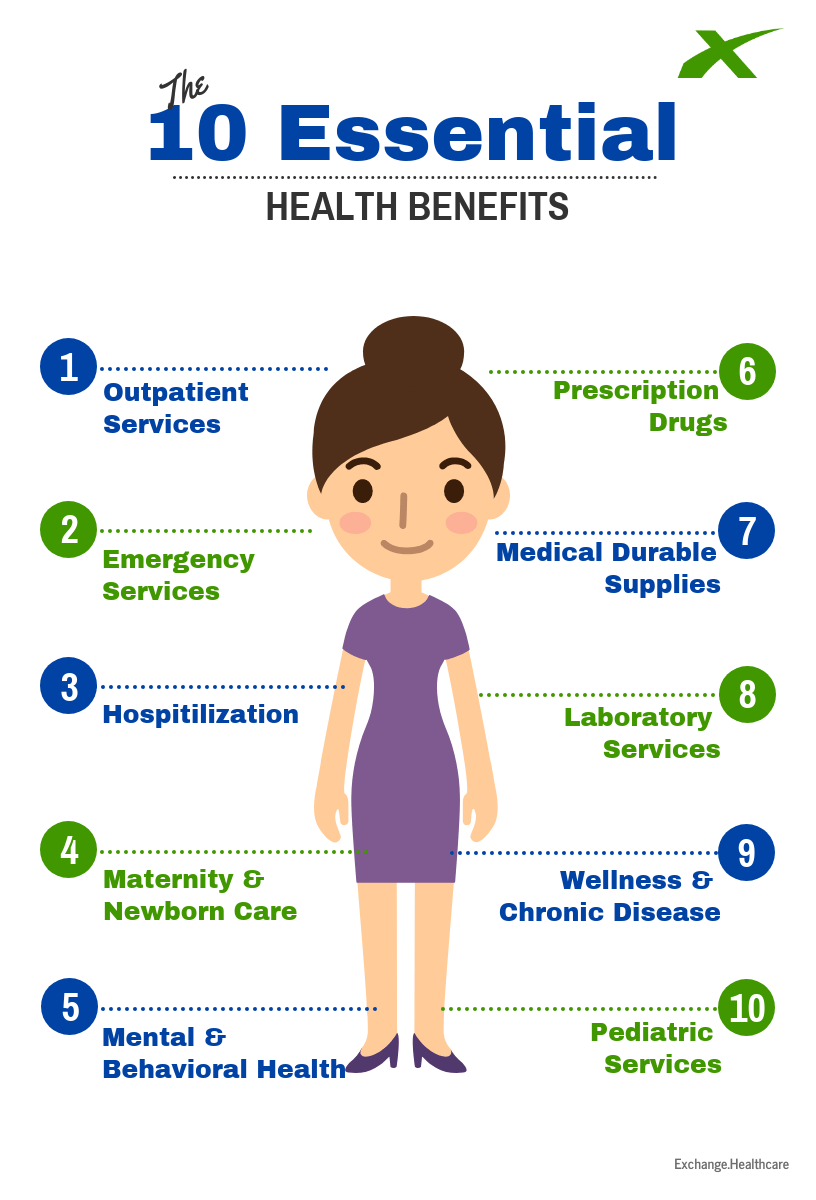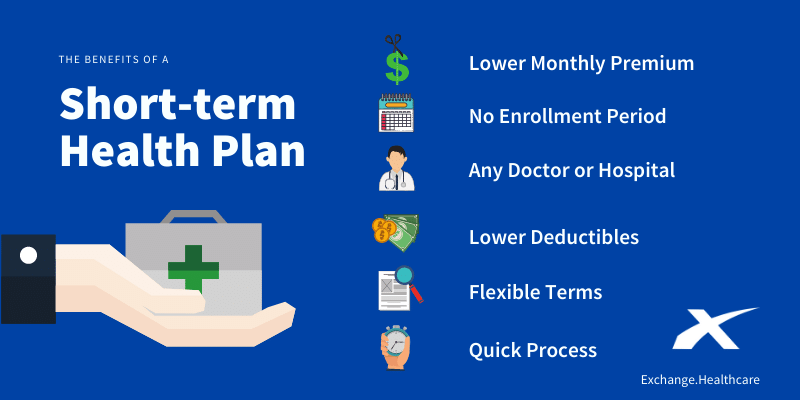The 10 Essential Health Benefits: What They Are & Do They Matter
Your physical and mental health are two of the biggest indicators of your overall quality of life. If you feel that you cannot adequately afford certain aspects of your health care, such as wellness checkups, vital prescriptions, mental health care and emergency health services, you may stay at home rather than seeking professional care. In certain circumstances, this can spell disaster to your health, causing acute illnesses to worsen or letting your chronic health issues develop without appropriate treatments.
To combat these and other concerns, the United States government under the leadership of President Obama passed the Affordable Care Act (ACA) in 2010. Often called Obamacare, this law provides for 10 essential health benefits in health insurance plans. Although the rules surrounding essential health benefits in healthcare have changed somewhat since President Trump came into office and passed the American Health Care Act of 2017, many plans offered to millions of consumers still offer these benefits.
Are you now asking yourself, “Do I need the 10 essential health benefits?” Read on to discover more about what these benefits are, who should have them and where you can find plans that include them.

What are the 10 Essential Health Benefits in Health Insurance?
The 10 Obamacare essential health benefits are a requirement for any health insurance plan that is compliant with the Affordable Care Act. Not only must these plans provide a variety of benchmark services, but also they must not have an annual or lifetime coverage limit. Consider each essential health benefit (EHB) below, and think about how these types of covered services could impact your own health care.
-Preventive and Wellness Services
Preventive services are the foundation of high-quality lifelong health care. These services help you stay healthy and let you and your practitioner catch potential problems before they become chronic health crises. This could include annual physicals, health screenings and vaccinations.
-Pediatric Services
Pediatric services are also essential for preventing childhood illnesses and setting children on the road to good health by the time they reach adulthood. Not only does this include well-child visit and vaccinations, but also it must include certain regular dental and vision services.
-Prescription Drugs
While not all prescription drugs must be covered under these plans, each ACA-compliant plan must include one drug from each category.
-Emergency Services
Emergency services must be covered, including those provided at out-of-network facilities.
-Maternity Services
Maternity services cover prenatal, antepartum and postpartum care as well as numerous services for newborns. It also includes genetic counseling, nutritional guidance, parenting education and much more to ensure a safe delivery and birth.
-Mental Health Services
In the past, many insurance companies resisted paying for these services as they could become quite costly over time. However, as an EHB, such services as alcohol and drug abuse treatments are now covered.
-Hospitalizations
This covers inpatient stays although individual plans may have certain limitations in place, such as limits on the length of your stay.
-Ambulatory Services
These are outpatient services that are provided instead of more costly inpatient hospital stays. For many plans, this is not a new covered service, but it is an important one because it is vital for ongoing good health.
-Laboratory Services
Not only are preventive health screenings covered, but also laboratory tests used for diagnoses and checkups on the effectiveness of certain treatments are now covered.
-Rehabilitation Services
Another type of outpatient treatment, these services provide for rehabilitation and recovery treatments after certain injuries or illnesses. ACA-compliant plans must cover at least 30 visits each year for physical therapy, occupational therapy, chiropractic care, speech therapy, cardiac rehabilitation and pulmonary rehabilitation.
Who Needs the 10 Essential Health Benefits?
You may be wondering, “Do I need the 10 essential health benefits?” While Obamacare essential health benefits plans do not cover every single service that you may need or that your doctor may recommend at your next appointment, EHBs do serve as a solid foundation for a high-quality health insurance plan. In particular, they let you get the important preventive care that you and your family members need while providing help for many acute and chronic illnesses.

These plans are most important for people in the early family years, for those planning on becoming pregnant and for those with mental illnesses or with one or more chronic illnesses. People who fall into these categories may very well find that their overall health care costs for the year decrease dramatically once so many of their regular services are covered. Plus, early treatment can lead to great cost savings, fewer emergency room visits and better quality of health as you age. If you are already struggling to pay your bills and find yourself cutting your health care spending to catch up, an ACA-compliant plan can provide the safety net and sense of security that you need.
What Plans Cover the 10 Essential Health Benefits?
Beginning in 2010, all plans offered under the Affordable Care Act were required to provide these essential health benefits. While some older plans that did not make these same provisions were allowed to be grandfathered in, most insurance companies dropped a majority of these older plans.However, in 2017, when President Trump introduced the American Health Care Act, states were given more control over setting their own essential health benefits. However, every insurance provider must still offer at least one ACA-compliant policy even as they are now allowed to offer additional policies that do not cover all EHBs.
How Much Are Plans That Cover the 10 EHBs?
Because of all that EHB-containing plans must cover and pay for over the lifespan of the insured individual, they cost quite a bit more than more bare-bone policies do. Without a subsidy, the average monthly price for an individual was $440 in 2018 and $1,168 for families. Subsidies are available for many families who do not make more than 400 percent over the Federal Poverty Line, helping to bring down these monthly costs for many families across America. Middle age individuals who cannot apply for a subsidy generally pay between 6 and 10 percent of their annual income on these health insurance plans.
Where Can I Buy a Plan with the 10 Essential Health Benefits?
Today, all plans offered through the United States Health Care Marketplace, including all HMO and PPO plans as well as catastrophic plans, must cover the 10 essential health benefits. While there may be a few differences in plans offered between states, the general coverages are the same. Keep in mind that the 10 essential health benefits are seen as minimum requirements in each of these plans, and you should read the fine print of your policy carefully before signing on the dotted line. In addition, all private insurance companies are required to provide at least one ACA-compliant plan.The essential health benefits in healthcare are designed to cover those physical and mental health care services that you are most likely to need throughout your lifetime. They will also cover a variety of important services that your family members will probably need throughout the year. Instead of finding yourself faced with unexpected charges just for seeing your primary care doctor once per year or for discovering that you need emergency services when you are out of town, plans with these benefits will make your health care charges more affordable. You may just find that this helps you better stay on top of your health and lets you experience a better quality of life even as you age.



About mins ago